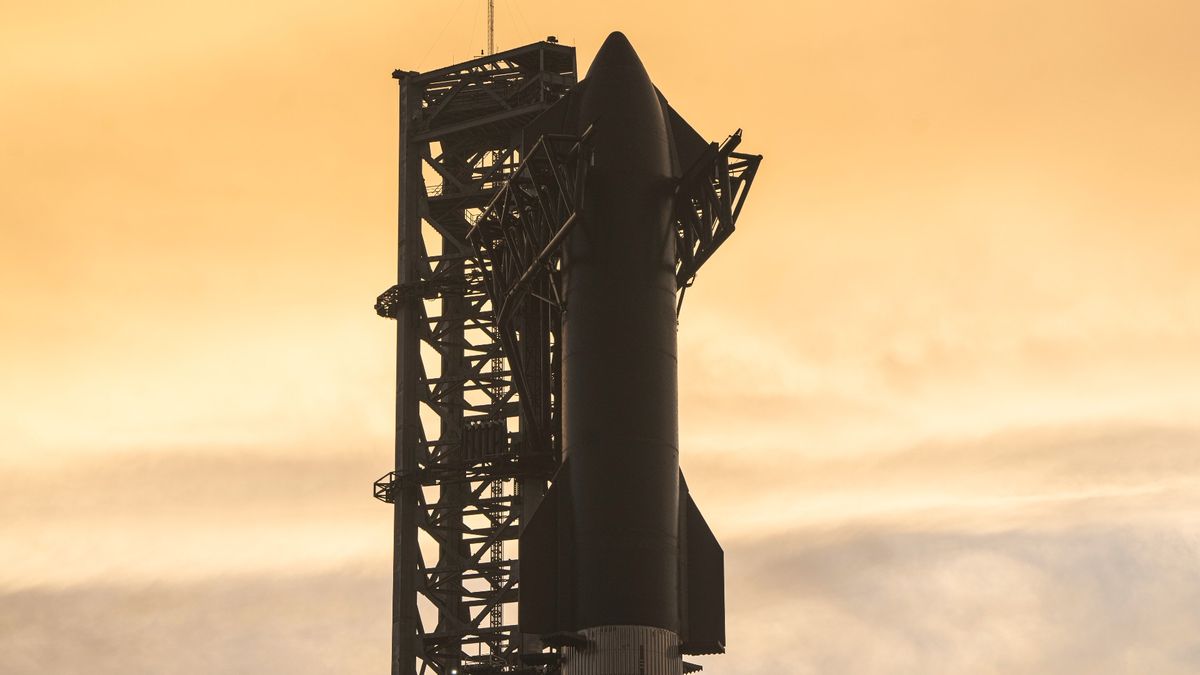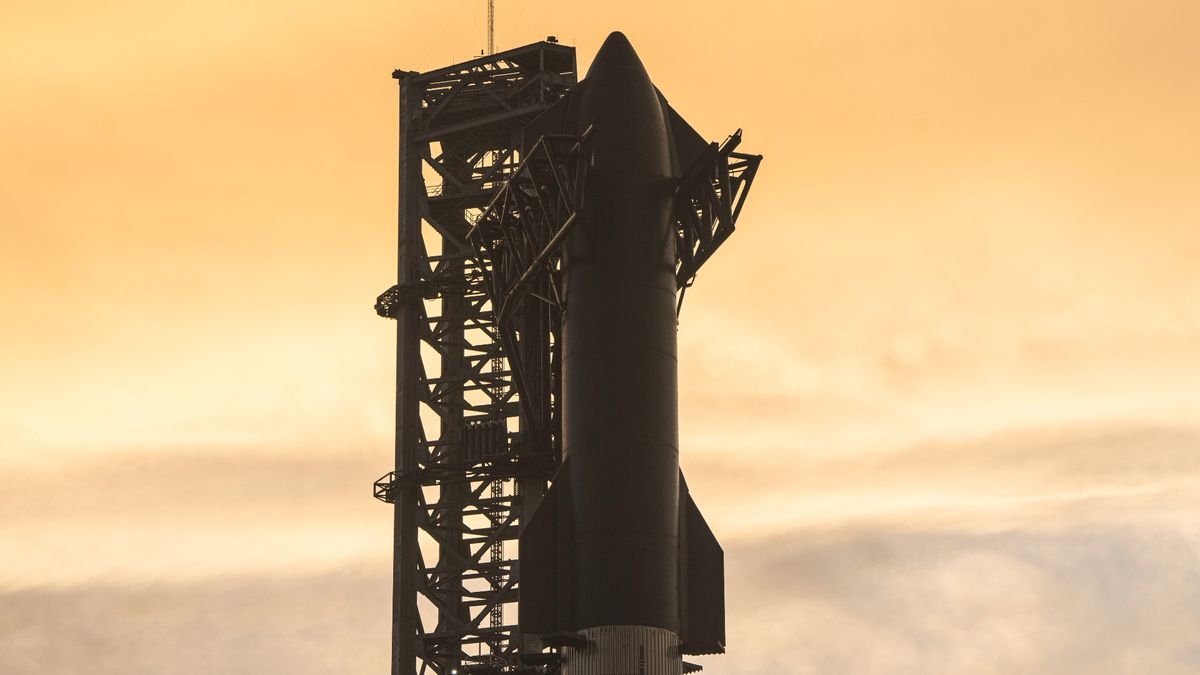
SpaceX plans to launch its Starship vehicle for the second time ever on Friday (Nov. 17), and you can watch the historic liftoff live.
SpaceX aims to launch Starship, a next-generation system designed to take people and payloads to deep space, on Friday during a two-hour window that opens at 8 a.m. EST (1300 GMT). Liftoff will occur from Starbase, the company’s site in coastal South Texas.
You can watch the action here at Space.com, courtesy of SpaceX, or directly via the company. Coverage will begin at 7:30 a.m. EST (1230 GMT).
Backup launch windows run on Saturday (Nov. 18) and Sunday (Nov. 19), according to multiple media reports citing U.S. Federal Aviation Administration (FAA) advisories.
Related: SpaceX fires up Starship prototype in deorbit burn test (video)
While Starship has been in testing for several years, the huge Starship-Super Heavy integrated system has just one liftoff under its belt to date. On April 20, Starship blasted off from Starbase and soared high in the atmosphere before spinning out of control. SpaceX remotely detonated the vehicle about four minutes after launch, scattering debris over a wide area.
The FAA closed its investigation into the mishap in early September and then finished its Starship safety review on Oct. 31. (The latter assessment determined the risks that a Starship launch might pose to public health and property.)
But SpaceX’s forthcoming launch also required approval from the U.S. Fish and Wildlife Service “on an updated Biological Assessment under the Endangered Species Act”, the FAA noted in October, given that Starship launches from an ecologically sensitive area.
RELATED STORIES:
Should Starship get safely into space this time, the expected 90-minute flight will see the spacecraft fly east over the Gulf of Mexico, make a partial circuit of Earth and splash down near Hawaii. Starship and Super Heavy are reusable systems, but this time SpaceX will aim for a simple splashdown in the ocean rather than landing vertically, as the first stages of SpaceX’s Falcon 9 and Falcon Heavy rockets commonly do.
Technically speaking, Starship won’t quite do a full orbit of the planet, but its expected flight should bring it to a near-orbital velocity of 17,500 mph (28,160 kph) at an altitude of 150 miles (250 kilometers).
SpaceX founder and CEO Elon Musk has already made big promises about Starship’s potential and attracted lucrative contracts. For example, Starship is NASA‘s chosen system to land astronauts on the moon as soon as 2025 or 2026 on the agency’s Artemis 3 mission (though NASA officials have said they are prepared to pivot to other types of missions if Starship is not ready by then).
Starship is also manifested to launch at least one of billionaire Jared Isaacman’s missions under the Polaris Program, and to send a group of artists around the moon with Japanese billionaire Yusaku Maezawa on a mission known as dearMoon, among other opportunities. Launch dates have not yet been released for these missions, given the early stage of Starship’s development.



